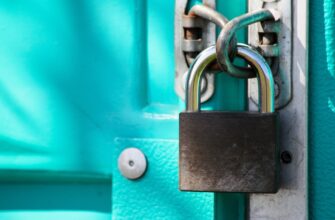- What Is an Air-Gapped Ledger and Why Encryption Matters
- Step-by-Step Guide: Encrypting Your Ledger in an Air-Gapped Setup
- Best Practices for Maintaining Air-Gapped Security
- Frequently Asked Questions (FAQ)
- Can I encrypt my Ledger without ever connecting to the internet?
- What if I forget my PIN or passphrase?
- Is air-gapping safer than Bluetooth/Wi-Fi enabled Ledgers?
- Can malware steal funds from an air-gapped Ledger?
- How often should I rotate my passphrase?
What Is an Air-Gapped Ledger and Why Encryption Matters
An air-gapped Ledger refers to a hardware wallet (like Ledger Nano S or Nano X) that operates completely offline, never connecting to the internet. This isolation creates a “gap” between your crypto assets and online threats, making it one of the most secure storage methods. Encryption adds another critical layer—transforming your sensitive data into unreadable code using your PIN and passphrase. Without encryption, physical theft could compromise your funds. With over $3.8 billion lost to crypto hacks in 2022 (Chainalysis report), air-gapped encryption isn’t just optional—it’s essential for bulletproof protection.
Step-by-Step Guide: Encrypting Your Ledger in an Air-Gapped Setup
Follow these steps to encrypt your Ledger device offline. Work in a secure, private location—no internet, cameras, or networked devices nearby.
- Initialize Your Ledger Offline: Insert the device into a power source (USB or battery). On the setup screen, select “Configure as new device.” Never use pre-connected computers.
- Set a Strong PIN Code: Create a 4–8 digit PIN. Avoid birthdays or patterns. Confirm it twice on the device. This PIN encrypts access to your wallet.
- Write Down Your Recovery Phrase: The device generates a 24-word seed phrase. Use the included recovery sheet and a pen—never type or photograph it. Store this offline permanently.
- Verify Your Recovery Phrase: Re-enter 3–4 random words when prompted. This ensures accuracy and completes encryption.
- Add a Passphrase (Optional): For military-grade security, enable the “25th word” passphrase via Settings > Security > Passphrase. Make it 10+ characters with symbols. Store it separately from your seed phrase.
Note: Transactions require temporary connection via USB to sign, but the wallet remains air-gapped otherwise.
Best Practices for Maintaining Air-Gapped Security
Encryption is just the start. Adopt these habits to fortify your setup:
- Recovery Phrase Storage: Use fire/water-proof metal backups (e.g., Cryptosteel) stored in a safe or bank vault. Never digitize it.
- Firmware Updates: Update quarterly via Ledger Live on a malware-scanned computer. Disconnect internet during installation.
- Physical Security: Store your Ledger in a tamper-evident bag or lockbox. Use decoy wallets with small balances if traveling.
- Passphrase Discipline: Memorize your passphrase or split it into physical shards stored with trusted parties.
- Regular Audits: Test recovery annually using a reset device (with minimal funds) to ensure access integrity.
Frequently Asked Questions (FAQ)
Can I encrypt my Ledger without ever connecting to the internet?
Yes. Initial setup, PIN creation, and passphrase activation require no internet. Only firmware updates or transaction signing need temporary connections.
What if I forget my PIN or passphrase?
Your PIN can be reset via recovery phrase (wiping the device). A lost passphrase is irrecoverable—funds are permanently locked. Always backup both.
Is air-gapping safer than Bluetooth/Wi-Fi enabled Ledgers?
Absolutely. Air-gapping eliminates remote attack vectors. Bluetooth/Wi-Fi devices (like Nano X) risk exploits—disable wireless features when not in use.
Can malware steal funds from an air-gapped Ledger?
No. Malware can’t access offline devices. Only compromised computers during transaction signing pose risks—always verify addresses on your Ledger screen.
How often should I rotate my passphrase?
Only if compromised. Frequent changes increase human error risk. Focus on physical security instead.
Final Tip: Pair air-gapped encryption with multi-signature wallets for enterprise-level protection. Your crypto’s safety hinges on disciplined offline practices—start securing today.








